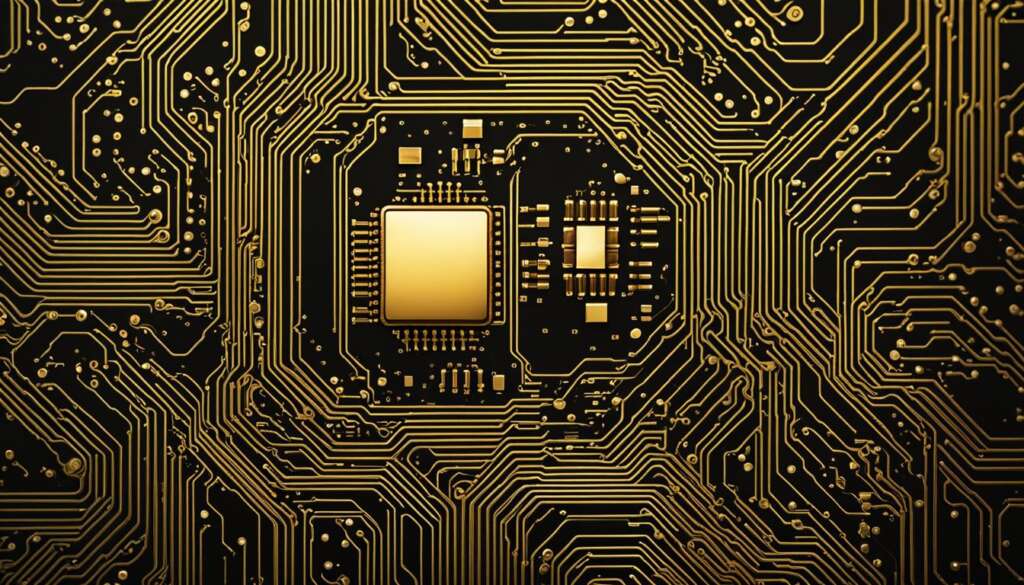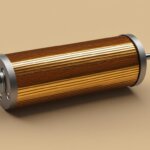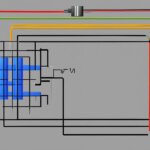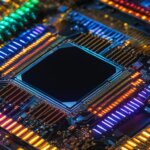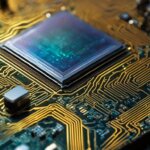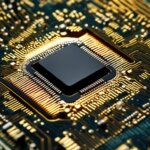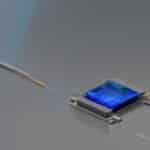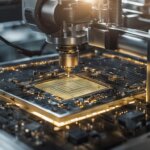Table of Contents
An integrated circuit (IC), also known as a chip or microchip, is a semiconductor device that plays a fundamental role in modern electronic devices. These miniature circuits contain thousands or millions of components such as resistors, capacitors, diodes, and transistors.
ICs serve a variety of functions in electronic devices, including amplification, oscillation, memory storage, and logic operations. They are the building blocks that enable the seamless functioning of our everyday gadgets.
Introducing a new level of miniaturization, ICs are fabricated on semiconductor wafers made of materials like silicon. These tiny chips are interconnected in a complex network to create circuits of different sizes, ranging from a few square millimeters to centimeters.
As we delve deeper into the world of integrated circuits, we will explore their rich history, the design and construction processes involved, the various types of ICs, and the intricate details of IC design flows.
History and Evolution of Integrated Circuits
The development of integrated circuits (ICs) can be traced back to the invention of the transistor in 1947. Initially, circuits were constructed using discrete transistors, capacitors, and resistors, which limited the complexity and size of the circuits. However, advancements in solid-state electronics, specifically the ability to miniaturise components, paved the way for integrated circuits.
“The invention of the transistor was a major turning point in electronic technology. It marked the shift from bulky vacuum tubes to compact, efficient solid-state devices.”
In the late 1950s, inventors Jack Kilby and Robert Noyce separately developed methods to fabricate thin paths of metal on devices, allowing them to function as interconnected circuits. Kilby’s hybrid integrated circuit came first, followed by Noyce’s monolithic integrated circuit made entirely of silicon. These advancements marked the beginning of the modern integrated circuit era.
Over the years, ICs have become smaller, faster, and more powerful, with the microprocessor being one of the most significant advancements in IC technology.
With the introduction of microprocessors, complex tasks that were once performed by large, mainframe computers could now be executed on a single chip. This breakthrough revolutionised the world of computing and paved the way for the development of personal computers, smartphones, and other electronic devices that we rely on today.
Advancements in Integrated Circuit Technology
The rapid progress in integrated circuit technology has been remarkable, driven by various factors such as Moore’s Law, which predicted that the number of transistors on a chip would double approximately every two years. This prediction has held true, leading to exponential improvements in IC performance and capabilities.
Additionally, advancements in semiconductor manufacturing processes have enabled the production of increasingly smaller and more efficient ICs. This has allowed for the integration of more complex circuitry and functionality onto a single chip, leading to higher processing speeds and greater energy efficiency.
The Impact of Integrated Circuits
The widespread adoption of integrated circuits has had a profound impact on virtually every aspect of modern life. These tiny electronic wonders power everything from smartphones and tablets to cars and space exploration equipment.
Today, integrated circuits are crucial components in a wide range of applications, including telecommunications, healthcare, transportation, entertainment, and many others. They have transformed the way we communicate, work, and interact with the world around us.
Design and Construction of Integrated Circuits
The design and construction of integrated circuits involve multiple levels of abstraction and complex processes. The IC is composed of multiple layers of semiconductor wafer material, such as silicon, with interconnected components such as transistors and resistors. Designers use a special-purpose programming language to create small circuit elements, which are then combined to form larger components on the chip.
The resulting circuit, known as a die, is too small to be soldered or connected to directly. To protect and facilitate connection, the die is packaged, turning it into the familiar black chip seen in various electronic devices. Packaging involves connecting the outer pins of the chip to the components and wires in a circuit.
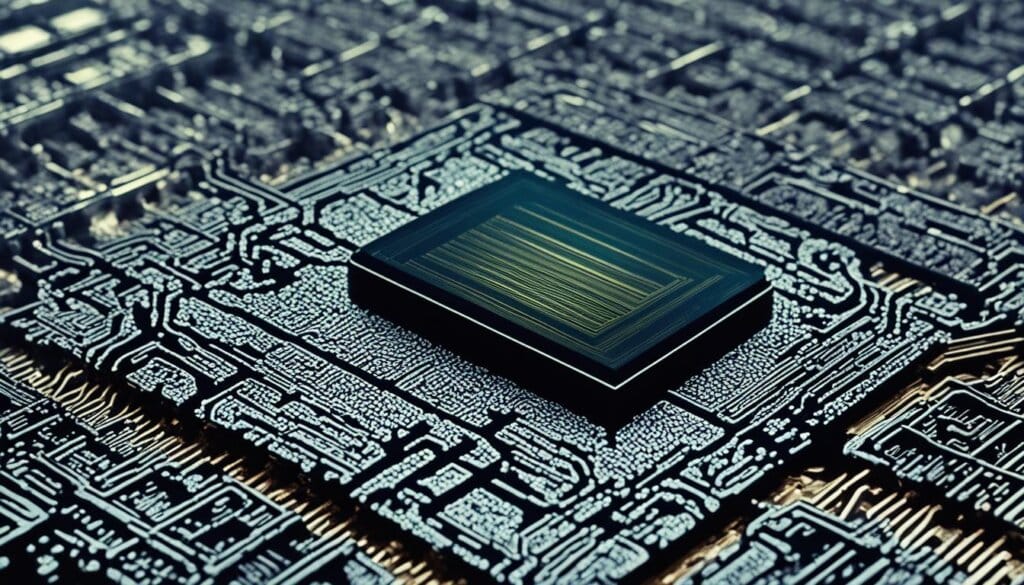
The process of designing and constructing integrated circuits requires precision and attention to detail. Each component, such as the transistor and resistance, plays a crucial role in the overall functionality of the circuit. The interconnected components are built on a substrate, which acts as a foundation for the circuit. The choice of substrate material, typically silicon, is based on its electrical properties and compatibility with the design requirements.
Once the individual circuit elements are created using the programming language, they are combined to form larger components on the chip. This integration process involves intricate wiring and interconnecting the various elements to ensure seamless functionality. The resulting circuit is known as a die, which forms the core of the integrated circuit.
The die, being too small to be directly connected or soldered, undergoes packaging to protect it and facilitate its use in electronic devices. The packaging involves connecting the outer pins of the chip to the components and wires in a circuit, ensuring proper electrical connections and stability. The packaged die, enclosed in a protective casing, is what we commonly refer to as an integrated circuit or microchip.
In summary, the design and construction of integrated circuits involve the careful creation and integration of multiple components, such as transistors and resistors, using a specialized programming language. The resulting circuit, known as a die, is then packaged to protect and facilitate its connection to other components in electronic devices.
Types of Integrated Circuits
Integrated circuits (ICs) are classified into different types based on their functionality and design principles. Understanding these types can provide valuable insights into the diverse applications of IC technology.
Linear ICs
Linear ICs, also known as analog ICs, are designed to process continuously variable signals. They are used for functions such as amplification, filtering, and signal conditioning. Linear ICs are commonly used in audio equipment, power management systems, and sensor interfaces.
Digital ICs
Digital ICs work with binary data and operate at discrete levels or states. These ICs are essential for performing logical operations, arithmetic calculations, and data storage. Digital ICs are widely used in computer systems, communication networks, and consumer electronics.
Mixed-Signal ICs
Mixed-signal ICs combine both analog and digital design principles to process and transmit signals in various electronic systems. They are used in applications that require the conversion of analog signals to digital signals or vice versa. Mixed-signal ICs are commonly found in data acquisition systems, telecommunications, and RF circuits.
The Microcontroller
The microcontroller is a specialized IC that integrates a processor, memory, and input/output peripherals on a single chip. It is designed to control and manage the operation of electronic devices and systems. Microcontrollers are used in a wide range of applications, including automotive systems, home automation, and industrial control.
Each type of integrated circuit serves a unique purpose and plays a vital role in modern electronic devices. Understanding the distinctions between linear ICs, digital ICs, mixed-signal ICs, and microcontrollers is essential for selecting the appropriate IC for specific applications.
Integrated Circuit Design and IC Design Flow
The design of integrated circuits is a systematic process that varies depending on the type of IC being developed. Digital IC design focuses on maximizing circuit density, ensuring logical correctness, and proper routing of clock and timing signals. This design process includes several stages, such as electronic system level (ESL) design, register transfer level (RTL) design, and physical design.
Analog IC design, on the other hand, specializes in the design of power ICs and RF ICs. It involves considerations of gain, power dissipation, resistance, and fidelity of analog signal processing. The goal is to ensure optimal performance and functionality in analog circuits.
The IC design flow consists of several essential steps, starting with system specification, functional and physical analysis, and logic and analog design. Simulation and verification play a critical role in validating design performance before moving on to circuit design and physical design. The final stage involves chip deployment, where the designed circuit is manufactured and deployed into electronic devices.
Overall, the design and manufacturing of integrated circuits require expertise in digital IC design, analog IC design, RTL (register transfer level), and physical design. This intricate process ensures the development of high-quality ICs that power a wide range of electronic devices we rely on in our everyday lives.
FAQ
What is an integrated circuit (IC)?
An integrated circuit, also known as an IC, is a semiconductor device that contains thousands or millions of miniature components such as resistors, capacitors, diodes, and transistors. It is also referred to as a chip or microchip.
How did integrated circuits evolve?
The development of integrated circuits can be traced back to the invention of the transistor in 1947. Advancements in solid-state electronics and the ability to miniaturize components led to the creation of integrated circuits. In the late 1950s, inventors Jack Kilby and Robert Noyce separately developed methods to fabricate interconnected circuits, marking the beginning of the modern integrated circuit era.
How are integrated circuits designed and constructed?
The design and construction of integrated circuits involve multiple levels of abstraction and complex processes. Designers use a special-purpose programming language to create small circuit elements, which are then combined to form larger components on the chip. The resulting circuit, known as a die, is packaged to protect it and facilitate connection to other components and wires in a circuit.
What are the different types of integrated circuits?
Integrated circuits can be classified into three main categories: linear (analog) ICs, digital ICs, and mixed-signal ICs. Linear ICs process continuously variable signals, digital ICs work with binary data, and mixed-signal ICs combine analog and digital design principles. One notable example of a specialized IC is the microcontroller, which contains a processor, memory, and input/output peripherals on a single chip.
What is the IC design flow?
The IC design flow refers to the systematic process followed in the design of integrated circuits. Digital IC design focuses on circuit density, logical correctness, and proper routing of clock and timing signals. Analog IC design specializes in power and RF ICs and involves considerations such as gain, power dissipation, and fidelity of analog signal processing. The design flow includes steps such as system specification, simulation, verification, and physical design, contributing to the overall design and manufacturing process of integrated circuits.

